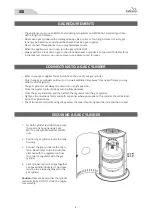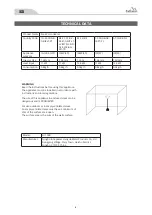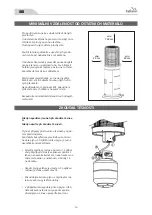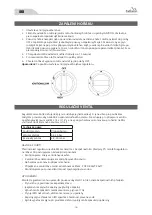
-4-
e
GAS REQUIREMENTS
•
The appliance must use an EN16129 standard gas regulator and EN16436-1 standard gas hose
with a length of 0.5meter.
• Never use a gas cylinder with a damaged body, valve, collar, or foot ring. A dented or rusty gas
tank may be hazardous and should be checked out by a gas supplier.
• Never connect this appliance to an unregulated gas source.
• When the appliance is not in use, turn the gas cylinder OFF.
• Always perform a leak test on gas connections whenever a cylinder is connected. If bubbles form
in the leak test solution, do not use. Never use a flame to test for leaks.
CONNECTING TO A GAS CYLINDER
• Refer to your gas supplier for instructions on the use of your gas cylinder.
•
Only change gas cylinders outdoors or in a well ventilated area away from naked flames and any
other source of ignition.
• The gas cylinder must always be used in an upright position.
• Close the heater control knob by turning fully clockwise.
• Close the gas cylinder tap and then attach the regulator onto the gas cylinder.
•
Tighten all connections firmly and with a spanner where appropriate. The cylinder should be locat
-
ed on the cylinder base.
• Check for leaks at all joints using soapy water. If a leak is found, tighten the joint and then re-test.
SECURING A GAS CYLINDER
1. Fix both cylinder restraint straps onto
the rear tank housing using 4pcs
M5*12 bolts with M5 washer and M5
nuts.
2. Position a gas cylinder inside the tank
housing.
3.
Connect the gas cylinder with a regu-
lator. Please refer to the instructions
attached with the regulator on how
to connect a regulator with the gas
cylinder.
4.
Stick cylinder restraint straps together
as above photo illustrated. The straps
must be in a proper tightness for the
gas cylinder.
Caution:
Please take care that the cylinder
restraint straps. DO NOT strain the regula-
tor assembly.





































